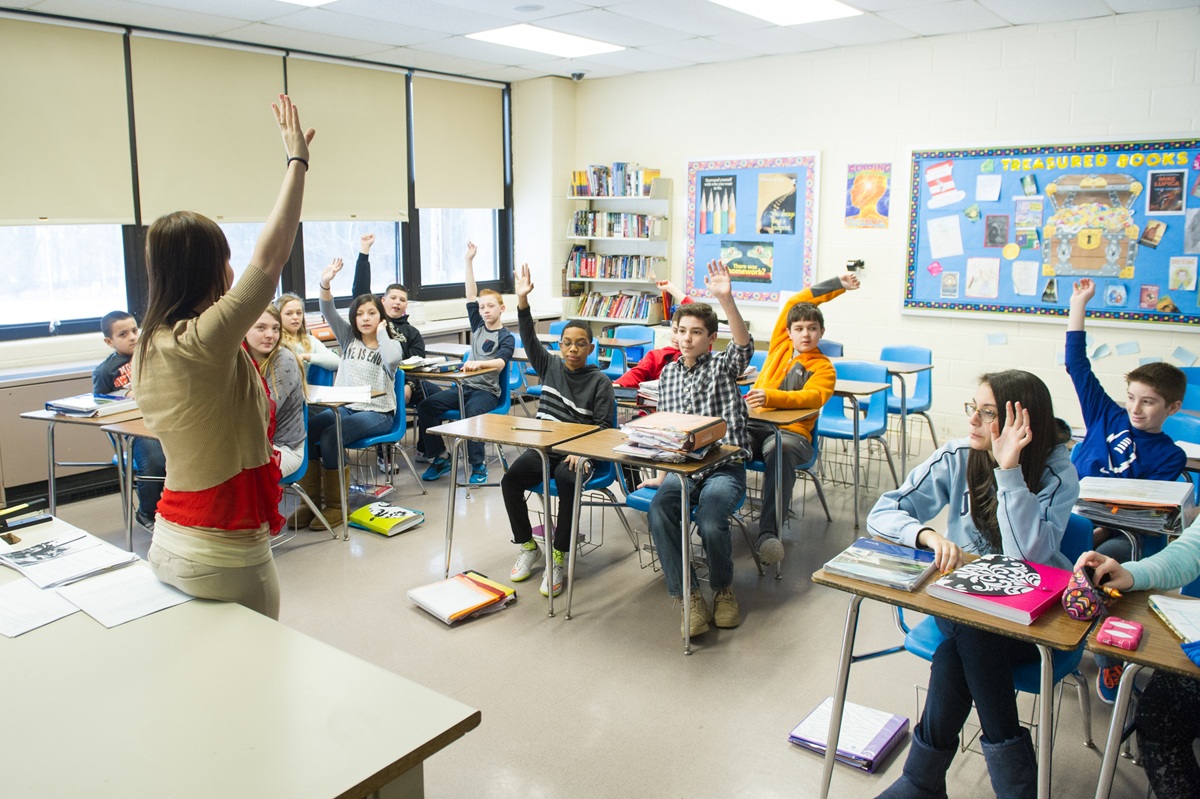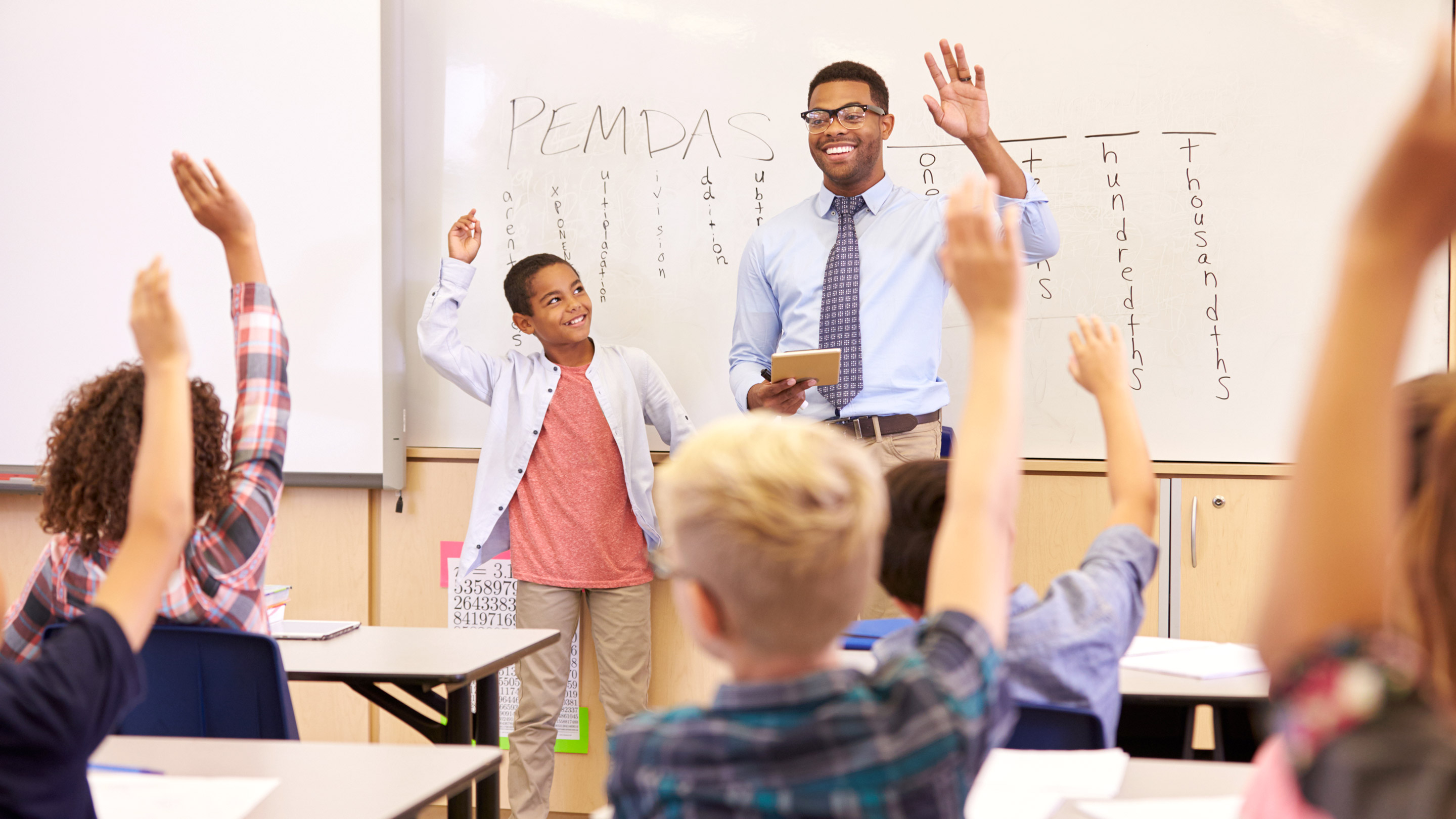Primary Science Tuition Singapore for Building Confidence in Science
Primary Science Tuition Singapore for Building Confidence in Science
Blog Article
A Comprehensive Overview to the Numerous Learning Approaches in Main Science Guideline
The exploration of diverse knowing methods in key science instruction presents a possibility for educators to improve student engagement and comprehension significantly. By examining hands-on knowing techniques, inquiry-based approaches, and collective strategies, we can recognize effective techniques that provide to various learning designs. In addition, the combination of modern technology and distinguished guideline plays a crucial duty in promoting a comprehensive environment. The question stays: just how can these approaches be properly applied in the class to optimize their impact? The answer hinges on a closer examination of each approach and its implications for teaching science.

Hands-On Discovering Strategies
Hands-on knowing strategies play a pivotal function in primary science instruction, engaging trainees in energetic expedition and trial and error. These methods allow students to connect straight with materials and sensations, cultivating a deeper understanding of scientific ideas. By making use of manipulatives, models, and real-life experiments, instructors develop a setting where trainees can observe, hypothesize, and evaluate their concepts.
Such methods not only enhance comprehension however additionally cultivate essential thinking and problem-solving abilities. When students take part in activities like developing basic equipments, growing seeds, or carrying out chemical reactions, they are urged to ask concerns and seek solutions through their own monitorings. This experiential technique helps to debunk complex scientific concepts, making them much more easily accessible and relatable.
In addition, hands-on understanding advertises partnership among peers, as pupils usually operate in groups to conduct experiments or share findings. This synergy not just improves their learning experience but additionally creates vital social skills. Ultimately, integrating hands-on methods in main scientific research direction fosters a lifelong love of understanding and interest about the environment, laying a solid structure for future academic pursuits in scientific research and beyond.
Inquiry-Based Understanding
Inquiry-based knowing is an educational strategy that encourages pupils to ask questions, explore phenomena, and construct their own understanding of scientific concepts. This approach shifts the emphasis from traditional teacher-led guideline to an extra student-centered experience, where students take the campaign in their academic journey. By fostering inquisitiveness, inquiry-based learning promotes deeper involvement with the material, enabling pupils to discover subjects in a meaningful context.
In method, this approach frequently includes hands-on experiments, monitorings, and crucial reasoning activities that straighten very closely with the clinical method. Students are motivated to create theories, style examinations, and examine data, which cultivates vital skills such as problem-solving and logical reasoning. The role of the instructor in this structure is to assist in exploration, directing students through the questions process while urging independent idea and collaboration.
Moreover, inquiry-based learning supports a sense of possession over the learning procedure, inspiring pupils to pursue understanding proactively. This approach not just improves understanding of scientific ideas yet additionally cultivates a long-lasting love for discovering, outfitting students with the abilities essential to browse a progressively complicated globe.
Collaborative Knowing Approaches
Collaborative discovering strategies empower trainees to take part in purposeful interactions with peers, cultivating a shared responsibility for their academic results. In key science direction, these techniques encourage students to work with each other to check out scientific concepts, address troubles, and conduct experiments (primary science tuition Singapore). By joining group tasks, trainees can leverage varied perspectives, enabling for richer understanding and retention of clinical understanding
One key aspect of collaborative understanding is the emphasis on interaction skills. Trainees should verbalize their thoughts, listen actively to others, and discuss ideas, every one of which are essential competencies in both real-world and scholastic contexts. This social interaction not just enhances their understanding of clinical concepts yet also promotes synergy and conflict resolution abilities.
When students see the worth of their payments within a team, they are more likely to take ownership of their understanding journey. Generally, incorporating collective learning strategies in main scientific research direction cultivates a dynamic learning setting that prepares trainees for future scholastic and social difficulties.
Modern Technology Integration in Scientific Research
The combination of technology in main science guideline enhances discovering experiences by giving innovative tools and sources that support different teaching approaches, consisting of joint knowing - primary science tuition Singapore. The usage of electronic platforms, simulations, and interactive applications allows pupils to involve deeply with scientific ideas, assisting in an extra hands-on approach to understanding
Online labs, for instance, enable students to conduct experiments securely and efficiently, advertising inquiry-based discovering. These tools can simulate real-world website link clinical circumstances, permitting pupils to envision complicated procedures that would be hard to replicate in a conventional class setting. Technology promotes interaction and cooperation among pupils, as they can share findings and work together on projects via on-line systems.
Furthermore, multimedia discussions and instructional video clips can enhance lessons by catering to diverse understanding styles, making abstract concepts much more obtainable. Data evaluation tools additionally encourage trainees to gather and interpret scientific data, reinforcing important assuming abilities. Overall, the calculated incorporation of technology in main scientific research guideline not just enhances interaction yet also prepares pupils for a technologically innovative culture, outfitting them with crucial abilities for future scientific endeavors.
Set Apart Direction Strategies
Set apart direction strategies are important for dealing with the varied needs of students in main science education and learning. These techniques make it possible for teachers to customize their mentor approaches to fit varying capacities, passions, and discovering designs within the class. By employing separated direction, instructors can create a comprehensive environment that promotes involvement and boosts understanding of scientific principles.
One reliable strategy is to utilize adaptable organizing, which allows trainees to collaborate with peers at comparable skill levels or with differing viewpoints. This approach motivates peer knowing and advertises important thinking. Furthermore, supplying selections in tasks can empower students, enabling them to pick projects that resonate with their interests while still meeting curricular objectives.
Additionally, incorporating tiered jobs is another beneficial strategy. By creating tasks with differing levels of intricacy, teachers can make sure that all students are properly tested, despite their effectiveness. Utilizing formative analyses to gauge comprehending additional makes it possible for educators to readjust their instructional techniques dynamically, making certain that each learner receives the assistance they require.
Ultimately, applying set apart guideline techniques this in key science education and learning not only improves pupil knowing end results yet additionally grows an enthusiasm for science, preparing students for future academic quests.

Conclusion
In recap, reliable primary scientific research instruction necessitates a diverse strategy that incorporates hands-on discovering, inquiry-based approaches, and joint strategies. The assimilation see of technology and set apart instruction better satisfies varied knowing styles, fostering an atmosphere conducive to exploration and critical thinking. By applying these approaches, instructors can boost student interaction and understanding, ultimately supporting a long-lasting enthusiasm for scientific research and query. Such extensive methods are necessary for creating notified and interested future researchers.
The expedition of diverse understanding approaches in main scientific research instruction offers an opportunity for educators to improve student interaction and comprehension significantly.Hands-on understanding techniques play a crucial duty in key science instruction, involving trainees in energetic exploration and experimentation.Inquiry-based understanding is a training approach that encourages pupils to ask inquiries, investigate sensations, and build their own understanding of scientific ideas.Collaborative learning methods empower pupils to involve in purposeful interactions with peers, fostering a common responsibility for their academic end results. Overall, integrating collaborative learning methods in key science instruction cultivates a vibrant learning environment that prepares trainees for future scholastic and social difficulties.
Report this page